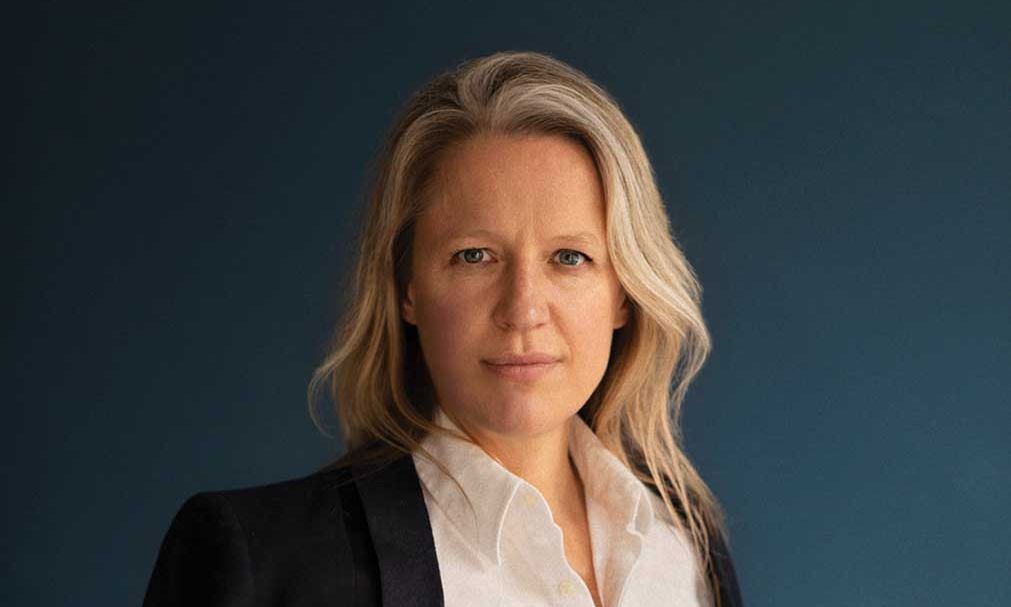Maike Cruse, who is heading up the Swiss edition of Art Basel, is looking to bring in a younger clientele to the fair. She previously directed Gallery Weekend Berlin
Photo: Debora Mittelstaedt
There is new blood at Art Basel, the world’s premier art fair. Its 2024 edition (13-16 June) will be the first led by Maike Cruse.
From 2013 to 2023, Cruse was the director of Gallery Weekend Berlin (GWB). Her recent appointment is a big step up: Berlin’s art market underperforms in comparison to its cutting-edge contemporary art scene, while Basel is renowned for its central position in the global art trade. But, as Cruse says, her previous role has prepared her for liaising with galleries and collectors, “just at a much different scale”.
Cruse joins at a time of rebranding for Art Basel, and her task will be, in part, to refresh the image of its tentpole Swiss fair, for which her stint working in one of the world’s most exciting gallery scenes will prove useful. “In the past few years there has been a significant turnover of collectors and curators,” she says. “We want to appeal to those new faces, while remaining the most important fair in the world.”
So, how does one of the industry’s most venerable brands go from classic to cool? Good parties, for a start. Art Basel launches a new venue this year at the Merian riverside hotel, a five-minute walk from the fair, whose restaurant and terrace will be turned into a venue for performances and talks, with a bar that will operate “into the late evening”. Its façade will be dominated by Petrit Halilaj’s installation When the Sun Goes Away We Paint the Sky (2022), which illuminates as the sun sets.
Conviviality as important as collecting
Although marketed as “round-the-clock”, Cruse admits the Merian will close at some point in the night. Still, in staid Basel such a venture will likely be welcomed by visitors for whom art fairs are as much about conviviality as they are about collecting. If the concept sounds familiar, it might be because of Basel Social Club, the art fair-cum-hangout venue that held its successful second edition in a vast mayonnaise factory last year during Art Basel.
“There is a generational transformation of the art market underway,” Cruse says. “Basel Social Club is responding to that with the same urgency as we are.” Such new efforts meet longer-standing ones by Art Basel to make the city—which is notorious for its prohibitively high hotel rates during the fair week—more attractive to visitors. This year, that means two luxury boats with around 100 rooms each, moored on the Rhine’s left bank, near St Johanns-Tor, to help tackle the issue that Basel, a city with fewer than 200,000 inhabitants, has “only one five-star hotel”, Cruse says.
But if Basel’s compact size provides it with key challenges, its intimate nature is also one of its greatest strengths, Cruse asserts. “Basel becomes the centre of the art world during the week of the fair, and much of that is due to its size. You bump into people on the bridge, at the bars, walking along the river. There are few art world destinations that can offer this.”
Courtesy Art Basel
To this end, the Parcours section of the fair, for outdoor and site-specific art, is being revamped and will be curated by the director of the Swiss Institute in New York, Stefanie Hessler. While previously these works were more spread out across the city, they will now be clustered together along Clarastrasse, near the fair, “to provide a greater dialogue with their surroundings, and to the people of Basel”, Cruse says. Works in this section include a performance inside a partially vacant shopping mall by Mandy El-Sayegh and a series of pirate flags by Rirkrit Tiravanija, installed on the Middle Bridge crossing the Rhine.
Reiterating what makes each Art Basel fair location unique is a strategy that was launched by the company’s chief executive, Noah Horowitz, when he took over in 2022. It is all the more important as discussion grows as to whether the brand’s latest fair, Paris+ par Art Basel, launched in 2022, is beginning to eclipse the Swiss event. Cruse worked at Art Basel for three years prior to joining GWB, and cites her knowledge of the city as a likely reason behind her appointment, adding that “it is very important to see the specificities of a city and respond to them”.
She draws from her experience as the brains behind two Berlin art fairs, Art Berlin and Art Berlin Contemporary (ABC). Both closed after a handful of editions, something Cruse attributes to the weakness of Berlin’s art market. “Nonetheless, ABC in particular responded very well to what Berlin is good at. It was very playful and had great galleries and artists.” Meanwhile, under Cruse’s tenure, GWB has grown into the biggest market event in the German capital and arguably the most well-known gallery weekend in the world. “What works in one city won’t necessarily work in another,” she says.
Along with new ventures will also come new galleries, including six from East Asia, such as Tina Keng Gallery from Taipei and Shanghai’s MadeIn Gallery. Naturally, Cruse will bring one newcomer from Berlin, Nome, which will take part in the Statements section for solo presentations by emerging artists, an area the fair has long relied on to help “rejuvenate and diversify itself”, she says.
• Art Basel, 13-16 June, Messeplatz, Basel, Switzerland

